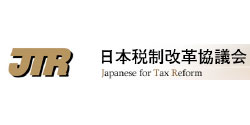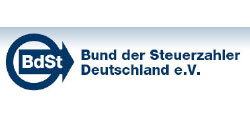Fiscal Lessons: Ten Years Without the Swedish Inheritance Tax
The Cayman Financial Review
May 22, 2016
By Anders Ydstedt
Sweden might not have much to teach other countries about tax policy. The tax-to-GDP-ratio of 42.8 percent (2013) exceeds the OECD average by nearly 9 percentage points. Our marginal tax rate on labor income is the world’s highest, and the capital gains tax is almost twice as high as the average in the EU, OECD and the BRIC countries. That being said, the developments from the year 2000 until today might still be interesting even for foreign readers.
In 2004, high tax Sweden abolished the inheritance tax and gift tax. This decision was taken by a unanimous Riksdag (parliament). In a new book, ‘Ten years without the Swedish inheritance tax: Mourned by no one – missed by few,’ by Amanda Wollstad and myself, we tell the history of the inheritance tax, its abolishment and what consequences it had on Swedish business owners and tax revenues. We also look at the tax situation in some other countries.
The Swedish inheritance tax has existed in various permutations since the 17th century. The tax was assessed against property acquired through inheritance, bequest and, in some cases, life insurance. The acquirer, the heir, was the taxable party. The tax was calculated on the value of the heir’s share of the estate, was progressive and varied depending upon the tax class to which the heir belonged. The inheritance tax rate reached a record high in 1983, with a top rate of 70 percent applicable to spouses and children. The phase-out commenced a few years later. In 2004, the year when it was repealed, the tax rate was 30 percent. The gift tax was calculated likewise. Most OECD countries that still have an inheritance tax regime have some kind of gift tax and the rules and percentage rates often coincide.
Inheritance and gift taxes were never a substantial source of income for the Swedish state. Revenues from inheritance and gift taxes reached a zenith in the 1930s, at about 0.3 percent of GDP. When the inheritance tax was repealed, the income equaled about 0.15 percent of GDP. The main reasons for the tax instead were based on notions of fairness and the wealth distribution policy and, to complement and legitimize other tax legislation, such as the wealth tax.
 Inheritance and gift taxes are harmful not only to families but to the society as a whole. The classic example of the destructive impact of the inheritance tax was the surviving spouse who could no longer afford to live in the heavily taxed family home because all assets were tied up in the property. Likewise, many families were forced to sell family homes and holiday cottages. Such cases were far from unusual and even relatively low sums of tax due could cause tremendous personal harm. This may partly be because Swedes are, by international comparison, considered as having little readily available capital. According to at study by Credit Suisse, the average financial wealth among Swedes is 43 percent of total wealth, which can be compared with the United States, where the share is 85 percent, or Denmark at 69 percent. The European average is also higher, at 57 percent. Only the United Kingdom, with its high real estate prices, has a lower share, 34 percent, but it should be noted that the total wealth per capita is one third higher in the United Kingdom than in Sweden. The household savings rate in Sweden is also low, perhaps due to high trust in collective welfare systems and an expansive social safety net.
Inheritance and gift taxes are harmful not only to families but to the society as a whole. The classic example of the destructive impact of the inheritance tax was the surviving spouse who could no longer afford to live in the heavily taxed family home because all assets were tied up in the property. Likewise, many families were forced to sell family homes and holiday cottages. Such cases were far from unusual and even relatively low sums of tax due could cause tremendous personal harm. This may partly be because Swedes are, by international comparison, considered as having little readily available capital. According to at study by Credit Suisse, the average financial wealth among Swedes is 43 percent of total wealth, which can be compared with the United States, where the share is 85 percent, or Denmark at 69 percent. The European average is also higher, at 57 percent. Only the United Kingdom, with its high real estate prices, has a lower share, 34 percent, but it should be noted that the total wealth per capita is one third higher in the United Kingdom than in Sweden. The household savings rate in Sweden is also low, perhaps due to high trust in collective welfare systems and an expansive social safety net.
The major problem with the inheritance tax arose in family businesses in connection with generational succession. These problems had much more profound consequences upon society in general and the Swedish economy. The basis for taxation, even with the relief rules introduced on several occasions specifically to lighten the burden on small and family businesses, often consisted of tied assets. Business owners were compelled to withdraw liquid assets from the business. The income, taxed as dividends, was then used to pay the inheritance tax. Even if the company had prepared for the distribution of the estate, tax planning takes time, energy and sometimes money away from the core operations of the business. It was not unusual that the inheritance tax drained companies of so much capital that their future development was endangered. Sweden even had some cases were the bequest went broke due to the taxation.
A famous case was the estate of Sally Kistner, widow of the founder of the pharmaceutical company Astra. The estate was worth SEK300 million (US$36 million in today’s exchange rate) when she died in 1984. The majority of her fortune was tied up in Astra-shares and the value of the shareholding was appraised at the market value on the date Kistner died. The stock market, however, realized that the heirs would have to sell a large portion of the shareholding in order to pay the inheritance tax and that the sale would adversely affect the value of remaining shares. The share price sank and, combined with the capital gains tax, the previously determined inheritance tax exceeded the value of the total assets of the estate. The estate was declared insolvent.
Taxes were probably the most important reason why families like Wallenberg changed their core business into a foundation to secure its future. Other families simply left the country, taking their fortunes and businesses with them. Tetra Pak founder Ruben Rausing, IKEA founder Ingvar Kamprad, and industrialist Fredrik Lundberg all chose to emigrate, mainly due to Swedish tax policy.
In 2002, the Social Democrat government appointed a parliamentary inquiry to review and evaluate taxes on ownership. There seems to have been growing understanding among Social Democrats of the problems related to these taxes. There was also rising concern about how Swedish taxes on capital worked in a globalized world.
The parliamentary inquiry suggested in June 2004 substantial reductions of the inheritance and gift tax. But this was certainly not enough. Protests from entrepreneurs were huge and the response to the proposal was very critical.
In September 2004, the Social Democrats, the Green Party and the Left Party presented the news about the budget bill for 2005. They had all agreed to repeal the inheritance and gift tax altogether. The government wrote, “For reasons including improving conditions for running a business, the inheritance and gift tax is repealed, which will facilitate generational succession.”
The ongoing attempts to craft exemptions and provide relief to small enterprises and family-owned businesses proved to be inadequate. The politicians finally realized that it was not possible to exempt, in any simple or predictable way, certain companies from the destructive effects of the inheritance tax without simultaneously undermining the foundations of the tax as a whole. I think the German politicians after the judgment in Karlsruhe now face the same challenge. Efforts to save the German Mittelstand from inheritance taxation will probably be perceived as unfair by the public when workers will have to pay more than factory owners in inheritance tax.
The repeal of the inheritance and gift tax also triggered a more intense discussion about the impact of taxes on ownership. In Sweden taxation of ownership was considered a “free lunch” for a long time. Much of the Swedish business sector is made up of owner-managed businesses that create a great many jobs and account for a significant share of economic growth. In Sweden, even most listed companies have controlling owners who take active responsibility for the company’s development. This discussion eventually led to the abolishment of the wealth tax in 2007 and a more reasonable taxation of owner-led corporations. These reforms were made by both a Social Democratic government led by Göran Persson and the following center-right government led by Fredrik Reinfeldt.
The repeal of these destructive taxes has given Sweden a smarter tax system and has brought entrepreneurs and investment capital back to the country. A smarter tax system generates higher economic growth and thus higher tax revenues. The tax ratio declined from 51 percent of GDP in 2000 to 44 percent in 2014, even as tax income increased by SEK260 billion (US$31.2 billion), adjusted for inflation. This is the result of several measures, including the repeal of gift, inheritance and net wealth taxes and the institution of the in-work tax credit, which has meant that more people have jobs to go to. In some ways, you could say that Swedish tax developments beginning in 2000 are proof of the Laffer-curve. With lower tax rates, especially lower taxes on ownership, the tax revenues increased.
Today Ingvar Kamprad and other successful entrepreneurs have moved back to Sweden and Swedish family business owners do not need to worry any more about inheritance tax planning. The political support for these reforms is strong, only the Left Party has changed its policy since 2004.
Sweden’s repeal of the inheritance tax was not unique. Many other countries have no inheritance tax, or at least none within the family. Several European countries have no inheritance tax regimes, including Austria, Cyprus, Czech Republic, Estonia, Liechtenstein, Norway, Russia and Slovakia. Countries outside Europe that have no inheritance tax include Australia and India. The effective tax rate can be zero even in countries that formally have an inheritance tax, or at least lower than it appears to be on tax rate tables. This applies in Switzerland, for example, where the effective taxation of a relatively large inheritance within the family is zero in practice. Studies of effective tax rates by AGN Europe show that the trend is generally moving towards lower taxation of inheritances in Europe.
Sweden still has the highest marginal tax rate in the world and taxes savings at nearly double the rate in effect elsewhere. We strongly need lower taxes. But foreign readers of our new book might find some interesting facts and experiences from the Swedish inheritance tax reform in 2004.















































